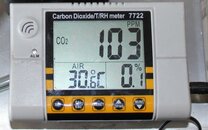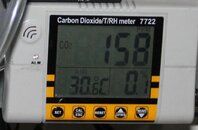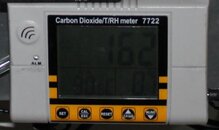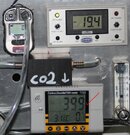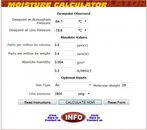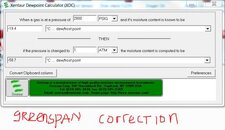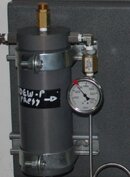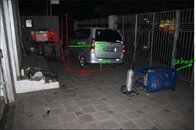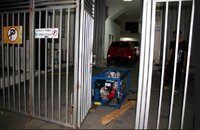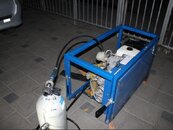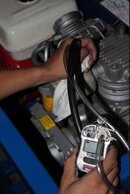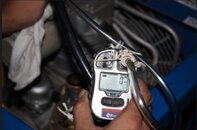Hi Jason,
Glad I can help.
1 pound of MS13X can generate 1,800 btu of heat when adsorbing water said the manufacturer.
Advanced Specialty Gas Equipment Molecular Sieves - Type 13X Molecular Sieve
This is typical, I seen all spec sheet mentioned the same 1,800 btu
1 Btu is supposed to be energy equivalent of heating 1 pound of water to 1 Farenheit, so they said

In simple term, 1800 btu if all released will burn a P21 blue plastic filter cartridge and whatever oil traces which it will SURELY have.
68 gram MS 13X is what you got in a typical non-hopcalite type P21 filter cartridge and there are documented P21 filter housing melt down on this board due to auto condensate failing to dump water and water enter the P21 filter cartridge in decent volume. Ian call this plasma fire, of some sort. To me is simple if 1 pound which is 454 gram = 1800 btu heat release , take average 68 gram which is 6.6 times less or let say only 272 btu heat release ( I think calculation is not this simple....heheehh). 40C is the typical air temperature of air and its oil mist in a P21 at 25C ambient.
Your compressor oil even a synthetic one is a typical 320C auto-ignition temperature ( AIT ) at 1 ATM and it is so if it a Bauer one.
At 200 BAR or 200 ATM, the AIT will be probably under 200C guesstimate if you looked at my gathered data posted at DecoStop.
So aside from CO2 generation from a hot running compressor, the so called filter housing meltdown is quite real, under the right circumstances of new fresh MS 13X and failure of auto-condensate drain.
I done a test recently on an older Mariner 200 with the 50 BAR oil pump. This is the ringless type floating piston used on 3rd stage.
The owner of the compressor is a friend of mine working in a government , they do marine research, sort of. I dont want to do compresor troubleshooting commercially, for friends or my own unit .....OK, I will do.
She ( yes a lady ) said her air production is very smelly.
So I took a look at the compressor and done a few inspection.
1st problem was, the 1.6 liter oil capacity of this block, took in 2 liters of oil.
So too much oil in compressor. So much oil have made it to the entire system.
I told her to send all her tanks for closer inspection as the oil will have made it to the tank. Its true, the tank internal are oil coated.
Second problem was the operator ( her staff ) did not change the filter cartridge intime, I bet 30+ hours of use or more. If I can attached the "smell" of the fiter cartridge in an email.......you will faint hehehehe. Smell like dead rat.
Anyhow back to the compressor. I dont want to clean all aftercooler pipes or the valves. I change new oil and runned it for few hours until water condensate is clear and the P21 receive decent oil in air production. All good.
Now the fun part. I know a compressor using a Honda ( this one is ) is a pain in the ass for CO avoidance at the intake unless you have wind going one direction to blow your CO away and where you place your compressor walls or building at least 20+ meters, better 100% open air on all 4 sides but with sunshade. And if there is no wind, even in a 100% open air area ........you are still getting CO hit into the snorkle.
I am getting 11 PPM CO during test at the lowest of reading from this compressor air production because my place is a building and even at outside garage the compressor is not really in a 100% open air situation and no wind too.
See the attachement, layout where I place the compressor.
Out of curiousity, and I know this compressor will have lots of oil trace on the compression chambers and all air delivery pipes and I also know that at 29C ambient a Mariner 200 runs hot. Too bad my infra red thermo gun is out of action.
So I want to know what composition of X amount of CO is actually produced by the compressor itself ?...aside from suction of the ambient CO from the Honda engine.
So I use a clean air supply with ZERO CO content and feed the compressor from a scuba tank. I open the tank valve just enough for surplus air to occur at the compressor air intake, making sure ambient CO will not be sucked into the compressor since there is positive pressure at the intake provided by the scuba tank. I use the ToxiRAE CO detector no1 to measure ambient CO at compressor intake, making sure I get zero CO and Honda CO production does not get sucked in. See attachment.
I then used ToxiRAE no 2 for final air production CO testing.
I get 3 PPM C0 on the air production with a 100% zero CO air input. This P21 filter cartridge is not using Hopcalite.
This compressor is only runned like a total 30 minutes but I know at 29C anything after 10 minutes and above 150 BAR, 2nd and 3rd stage will be hitting easy 130C plus.
So where do I get the CO from ? Its the oil traces within the compression chamber which is mildly burning, no other source.
The same test with my newer 5 BAR oil pressure Mariner 200 while being forced cooling with a 81,000 liters per minute blower, do not get any CO and I test at the final water separator output before the P41 filter cartridge.
So a mild over heating compressor will produce CO ? Sure. How much ? I dont know if one run the compressor for hours and hours.
Do you know your compressor is getting mild overheating ? Now way unless you install the automatic overheating shutdown which will trigger auto-off at 132-135C ( if a Bauer ) or you install thermo probes like I do or you have a CO detector at output like Fire Station and will auto-off the compressor when certain programmed level of CO is detected at production air side.
Will continue...........



